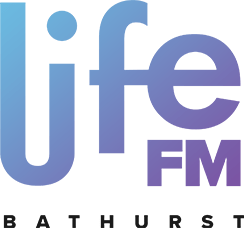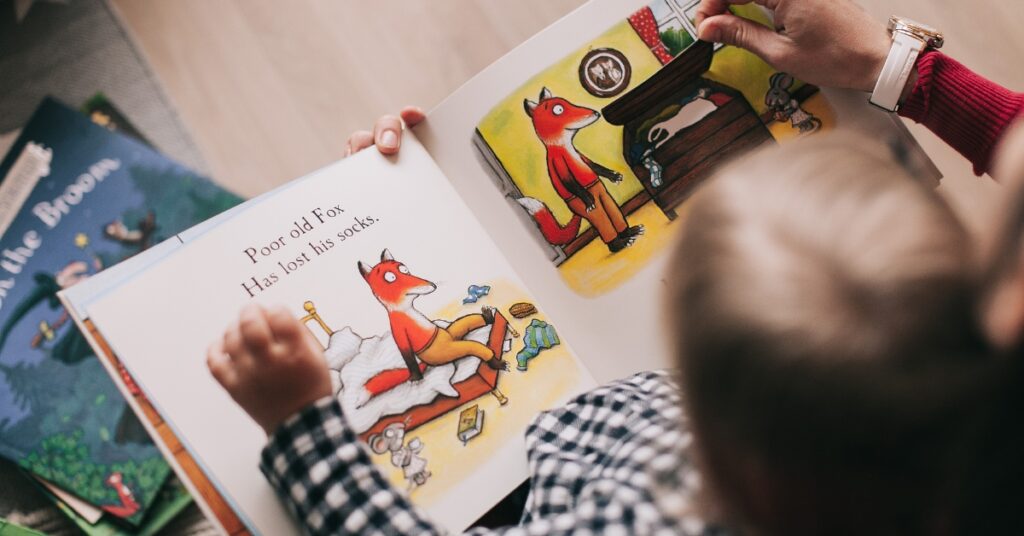By: Jordana Grace
For parents juggling homework battles and bedtime routines, the struggle to get children engaged with reading is all too familiar.
If you’ve ever watched your child struggle with reading and wondered what you could do to help, you’re not alone.
Choosing the right books for children learning to read can feel overwhelming with so many options available. On top of that, the countdown to the first day of school can be a stressful time for parents and grandparents.
Local mum, educator and founder of The Reading Village Kellyanne Cazeau has 16 years of classroom experience. She shares some eye-opening insights about why reading to your children is one of the most powerful gifts you can give them.
Many parents face this challenge, and the good news is there are answers and support available. However, Kellyanne has a clear answer that could transform how parents approach early reading.
While many focus on academic preparation, she suggests a different approach that might surprise you: parents shouldn’t panic, and there’s plenty of hope for children who find reading difficult.
The Secret is in Decodable Readers
When asked which books are best for beginner readers, Kellyanne had a specific recommendation that many parents might not be familiar with.
“If you go to any local library and ask for decodable readers or decodable texts, these are basically books that are sequenced and organised according to phonemes (or sounds),” she explained.
“We teach children to read using a group of phonemes at a time.
“The reason these books are the best books for beginner readers is they don’t have all of the phonemes of the English language all at once… there are 44 phonemes in the English language.”
The staged approach makes learning manageable: “Beginner readers don’t need to know all of those off by heart at the beginning. You will teach maybe eight to begin with.
“Stage one of your decodable texts will just have the first eight sounds within those books, which makes it a lot easier for children to blend and read those eight sounds.”
Understanding Phonemes and Sounds
“Phonemes is a speech sound, and graphemes are the letters that represent those sounds,” Kellyanne explained, helping parents understand why the English language can be tricky for new readers.
“For example, the letter A can say “Ay”. It can also say “Uh”. That’s where English gets tricky,” she said.
This systematic approach is what makes decodable texts so valuable: “The decodable texts, they are organised in a way that introduces students to these phonemes in stages.
“Whereas if you just pick up any book from the library, that’s great. You can read that to your child because you most likely have a good knowledge of all the phonemes.
“But to learn to read, you cannot just pick any book off the shelf. You need these decodable texts.”
When to Start and Why it Works
Kellyanne recommended starting decodable books “anywhere between four to six years old. Really depends on the child. Each child is unique.”
However, she emphasised preparation is important: “But before getting them into those books, listening to lots of rhyming songs, there are lots of songs that introduce the sounds that letters make.
“This is a great way just to get the ears ready.”
She also suggested adapting familiar games: “Playing games at home that get them ready for like a little bit of a twist on “I Spy”.
“You know how we say “I spy with my little eye? Something beginning with mmm…” We don’t use the letter name. We’ve got to steer away from using the letter name. It’s not really that helpful in learning to read.”
Practical Advice for Parents
For parents ready to try decodable readers, Kellyanne offered simple guidance: “Just visit your local library and at the back of the book it will say which phonemes are included in that book.
“If you point to those phonemes, it’ll just be letters on the back of the book.
“Say to your child, what sound does this make? If they can identify the sound that those letters make, that book will be good for them.”
This approach helps parents choose appropriate books and assess their child’s readiness for each level.
It’s Not Always What You Think
“The big one parents think, oh, is my child dyslexic?” Kellyanne explained. However, she noted that for most children, this isn’t the case.
“For most children, that’s not always the case. It’s not always a learning disability or learning difficulty there. A lot of the time, sadly, it’s the way the child is being taught,” she said.
Kellyanne, who has worked in schools for many years, was honest about the challenges within the education system.
“The Australian curriculum has been updated now to reflect the best practice of teaching reading.
“But there are still schools who are getting on board with teaching reading using a structured literacy program.”
Reading is Different to Speaking
One important point Kellyanne emphasised is that learning to read isn’t like learning to speak.
“It’s not a skill,” she said. “You cannot learn to read through immersion. It’s so different from learning to speak.
“Children pick up oral language, being around it. But reading is not a natural skill or something created.”
This means children need explicit teaching methods rather than simply being exposed to books and hoping they’ll pick it up naturally.
Simple Ways to Help at Home
For parents wanting to support their children, Kellyanne suggested some practical activities.
One way to identify if there might be a learning difficulty is to test phonemic awareness through fun games.
“If you want to identify if it’s a learning difficulty, first see if they can orally blend sounds… play some fun [phonemic word] games… see if they can work out the word,” she explained.
She also suggested games like “Simon Says”.
Building a Love for Books First
Before children can read independently, they need to enjoy books. Kellyanne’s advice is simple: read to them.
“Before they want to read, they need to enjoy books. And the way they get to enjoy books is by you reading to them.
“Establish that from very early on reading to your child, even reading to babies is really beneficial.
“That just gives them a greater vocabulary and then helps them understand books later on.”
Don’t Panic – Seek Support
For parents currently worried about their child’s reading progress, Kellyanne’s first piece of advice was reassuring: “First of all, don’t panic.”
She encouraged parents to try the suggested activities and continue reading to their children, but also to seek help when needed.
“If they’re still not able to pick up reading, I would seek help and speak to their teacher to get advice of where to next.”
Importantly, she reminded parents that asking for help isn’t a sign of failure. “We all need to call out to someone at some point in our parenting journey.”
Kellyanne also advised parents to advocate for their children: “Speak to the teachers and if you’re not feeling like you’re being heard, then seek other avenues of support.”
Hope for Every Child
Reading difficulties are often about teaching methods rather than a child’s ability. With the right support and approach, children can move from struggling with books to enjoying them.
For parents feeling overwhelmed by their child’s reading challenges, Kellyanne’s message offers both practical help and encouragement that every child can learn to read with the right support.
The numbers will blow your mind
“A book a day is 78,000 words a year which totals to 1.4 million words by the age of five,” Kellyanne explained.
This word exposure doesn’t require lengthy novels or complex stories.
“Small books, those when they’re babies, those board books, the ones they can’t tear or chew,” she clarified, acknowledging the reality many parents face with enthusiastic toddlers.
Building Vocabulary and Communication Skills
Beyond the impressive word count, reading serves a deeper purpose in child development.
“Getting that word exposure to them, building their vocabulary is really going to help them with their language skills,” Kellyanne noted.
“And being able to communicate, which is really important, those communication skills for them to be independent at school and just helping them comprehend their world.”
For parents watching their children’s developing minds, this process is particularly fascinating.
“There’s a lot going on because reading is not a natural skill. It needs to be explicitly taught,” she explained.
“So the repetition of reading to kids is firing off those neurons as well.”
Creating Connection in a Busy World
Reading together offers something precious in our technology-filled lives.
“It is a time where parents get to be focused one on one with their child, put down the technology and just connect,” Kellyanne shared.
“Connect with stories. Stories bring about conversations as well.”
This bonding aspect becomes even more valuable as children grow and school demands increase. Many parents struggle when reading homework becomes a chore rather than a joy, but Kellyanne offers practical solutions.
Hacks for Helping your Child Read
For families where bedtime stories have become battlegrounds, the key is giving children agency.
“I think it’s absolutely important for the child to choose the book,” she advised. “It has to be child led. They feel they’re in control and they’re more interested to sit down.”
Creating the right environment also matters. “We put lavender oil on in our bedroom to get everyone in a calm state,” Kellyanne suggested, recognising that children need to be settled before they can engage with stories.
And for families struggling with books altogether, there are other ways to build language skills and connection. Kellyanne recommends conversation starter packs and language games as alternatives that still provide quality bonding time and skill development.
“There are so many games out there that you can bring in language and also build connection time with your child as well,” she noted, offering hope for parents whose children aren’t yet ready for traditional story time.
Reading: A Foundation for Future Learning
The work parents do in those early years of reading together creates a foundation that extends far beyond literacy.
“It’s getting them used to sounds, getting them ready for when this is like pre reading,” Kellyanne explained. “It’s preparing them for one day to be able to read for themselves.”
The simple act of sharing a story each day—whether it’s a board book with a toddler or letting an older child choose their own adventure—creates connections and builds skills that will serve children throughout their lives.
Preparing children for school goes beyond academic skills. It’s about independence, social skills, emotional preparation, and supporting both children and parents through a significant life transition.
Article supplied with thanks to Salt 106.5.
Feature image: Canva





